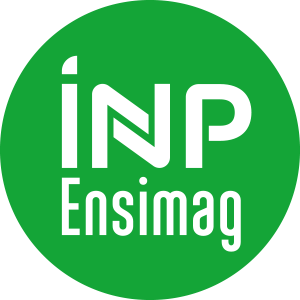Number of hours
- Lectures 12.0
- Projects -
- Tutorials 21.0
- Internship -
- Laboratory works -
- Written tests -
ECTS
ECTS 3.0
Goal(s)
The goal is to present the core principles of human-centered approaches for analyzing, designing, implementing and evaluating interactive systems. At the end, students will be familiar with utility (good coverage of the needs) and usability (good quality of service), the two key properties in Human-Computer Interaction for both evaluating and developing User Interfaces (UI). They will be able to design, implement and evaluate interactive systems following a user centered approach. The principles are applied to graphical UIs, including web sites.
Gaelle PAEN
Content(s)
The course presents the key steps and models in user centered design. It also covers ergonomic criteria for sustaining both the design and the evaluation of user interfaces.
- Analysis: cognitive models, rationale of the system, models of the user, environment, and activity
- Design: tasks, domain and platform models, ergonomic criteria, abstract and concrete user interfaces, specifications (User Action Notation)
- Implementation: software architecture models, tools (overview of web programming techniques)
- Evaluation: predictive and experimental, qualitative and quantitative approaches.
The course includes 18h of formal lectures and 18h of project. The project is conducted in subgroups of 3 to 4 students (depending on the total number of students). It lasts during the whole semester. Students have to analyse a need, and then to design, prototype and evaluate an interactive system. The topic is chosen by the students, and moderated by the teacher. The students have to produce two documents (analysis and design), and to present their prototype and its evaluation (protocol and results) during a defense.
PrerequisitesNone
Evaluation : Projet (évaluation en continu et sur le rendu) + soutenance
Resit : Examen Ecrit (2h00)
- Regular settings ***
N1 = P
N2 = E2
- Regular settings ***
For session 1, the score is the score obtained in the project.
For session 2, the score is based on a written exam (2 hours).
- Remote teaching **
N1 = E1
N2 = E2
- Remote teaching **
For session 1, the score is the score obtained on a written exam, in replacement of the project.
For session 2, the score is based on a written exam (2 hours).
The course exists in the following branches:
- Curriculum - Financial Engineering - Semester 8
- Curriculum - Math. Modelling, Image & Simulation - Semester 8
- Curriculum - Information Systems Engineering - Semester 8
Course ID : 4MMIHM6
Course language(s): 
The course is attached to the following structures:
- Team Image Vision Interaction Multimedia Bioinfo
You can find this course among all other courses.
B. Buxton, "Sketching User Experiences, Getting the design right and the right design", 2007
S. Card, T. Moran and A. Newel, “The Psychology of Human-Computer Interaction”, Lawrence Erlbaum Associates, 1983.
J. Nielsen, “Designing Web Usability: The Practice of Simplicity”, New Riders Publishing, Indianapolis, 2000. ISBN 1-56205-810-X
J.F. Nogier, “Ergonomie du logiciel et design web : Le manuel des interfaces utilisateur”, 4ème édition, Dunod, 2008.
M.B. Rosson, J.M. Carroll, Usability Engineering: Scenario-based development of human-computer interaction. Morgan-Kaufmann, 2002.
B. Shneiderman, “Designing the User Interface, Strategies for effective Human-Computer Interaction”, Addison Wesley, 1992.
A. Seffah, J. Gulliksen and M. Desmarais, “Human-Centered Software Engineering, Integrating Usability in the software development lifecycle”, HCI Series, Springer



